Lomatium orientale (White-Flowered Parsley) - photos and description
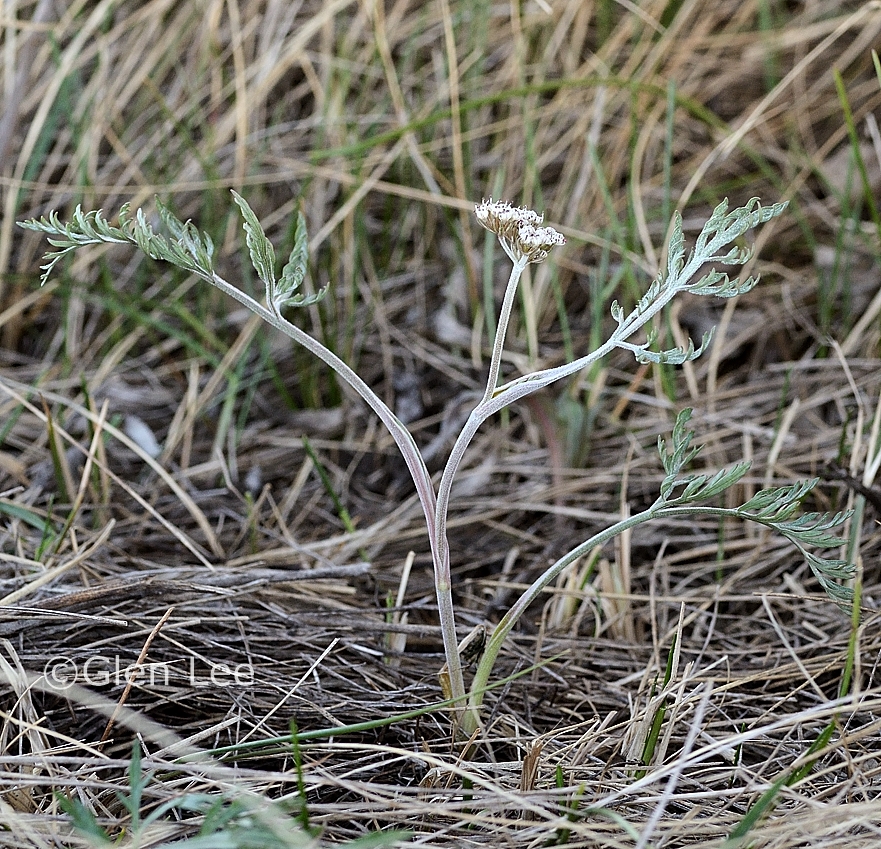
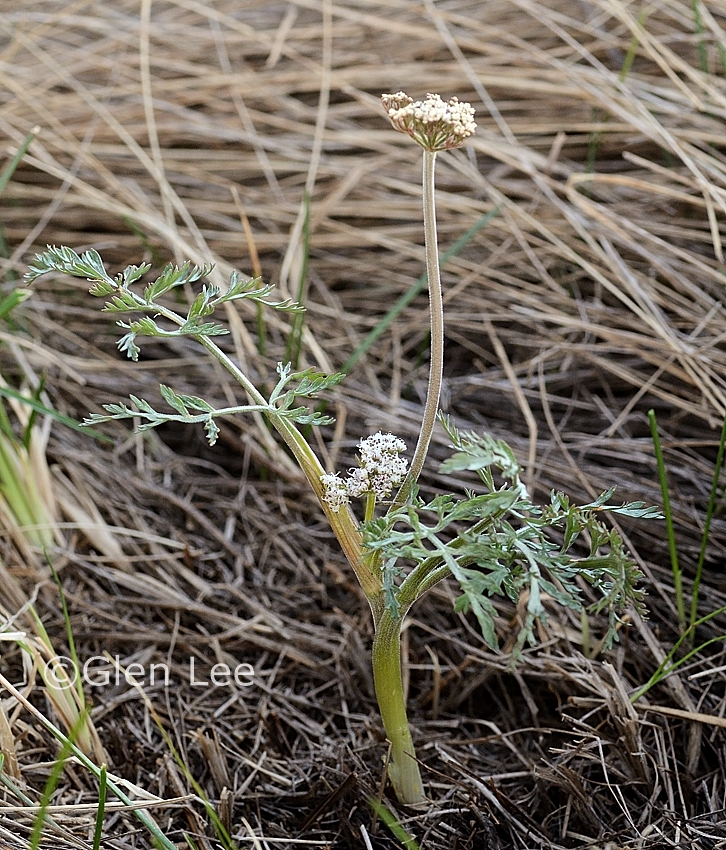
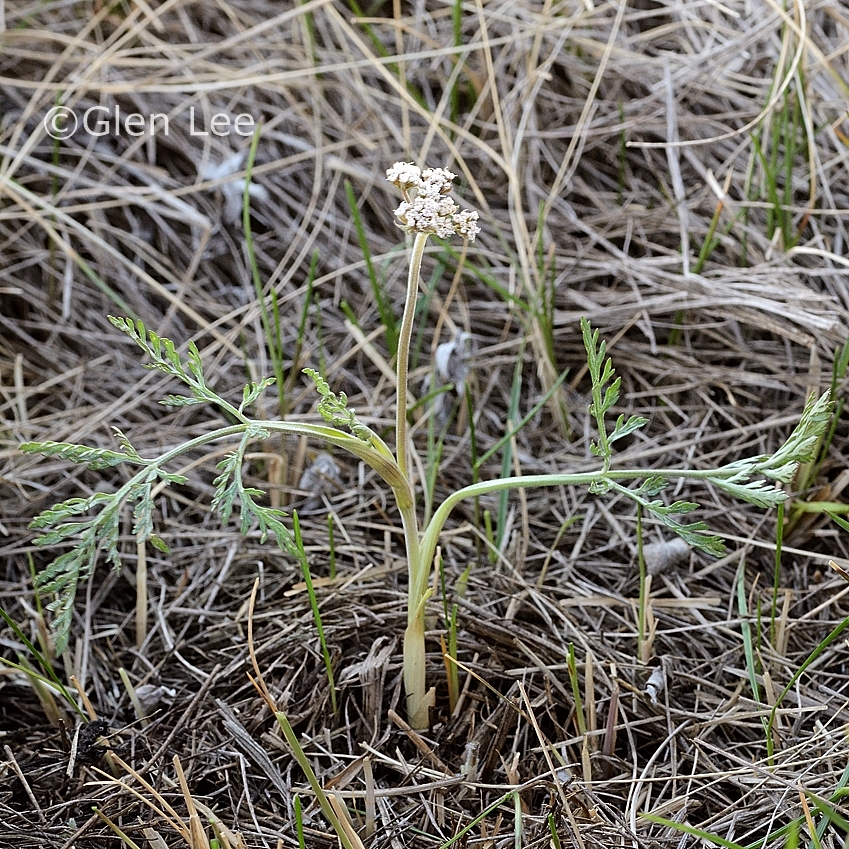
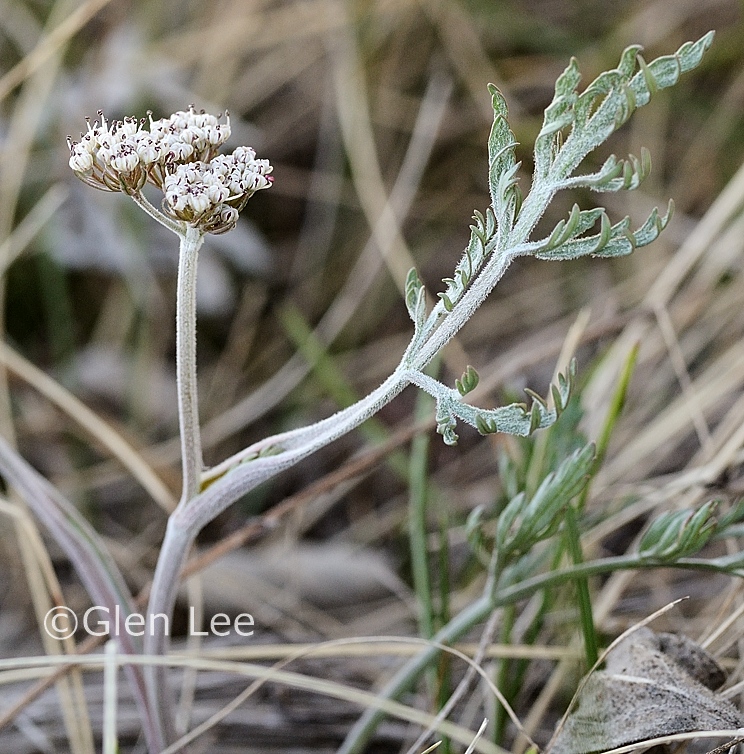
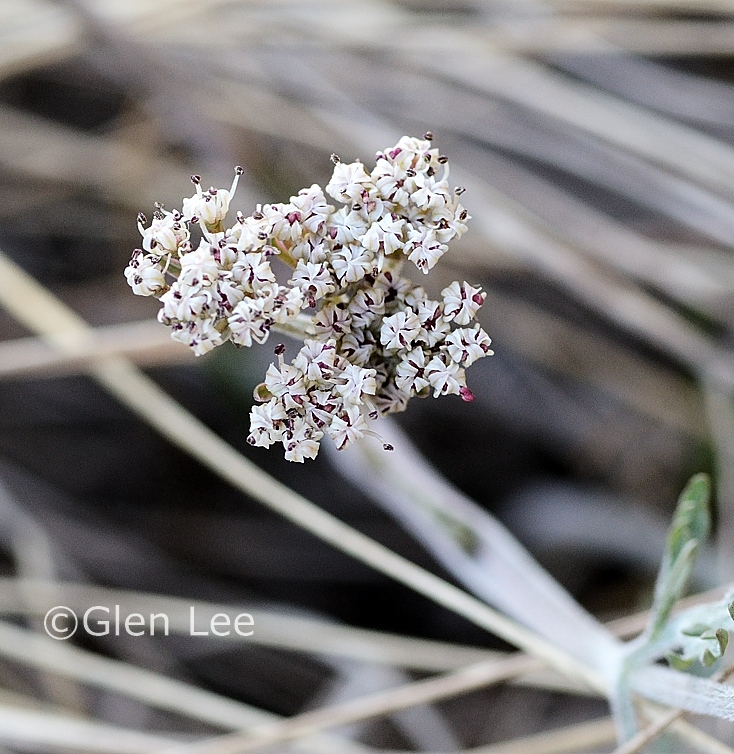
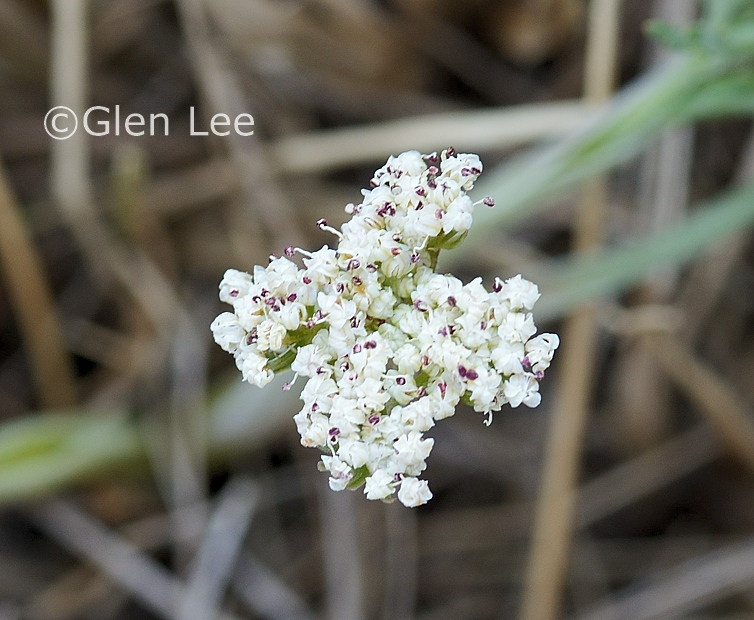
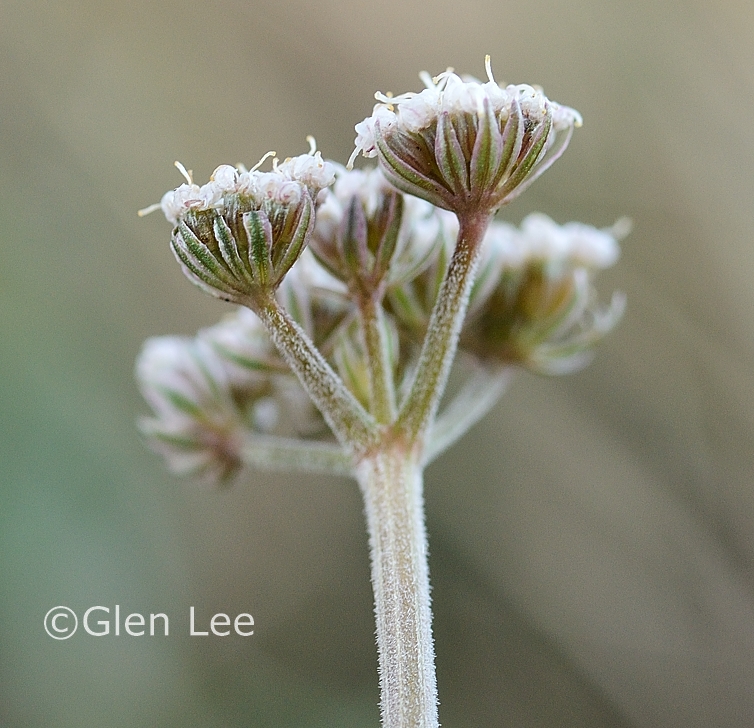
Bractlets scarious-margined, glabrous, no longer than the flowers
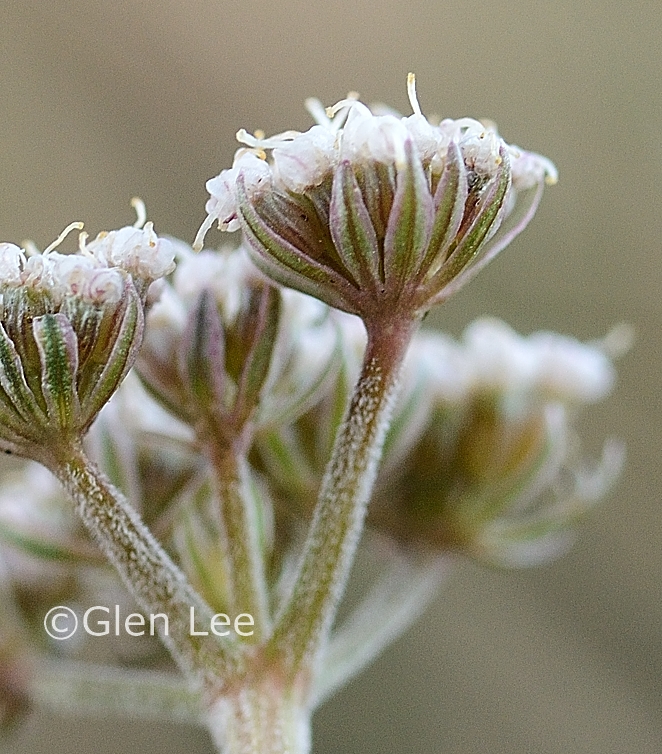
Bractlets scarious-margined, glabrous, no longer than the flowers.
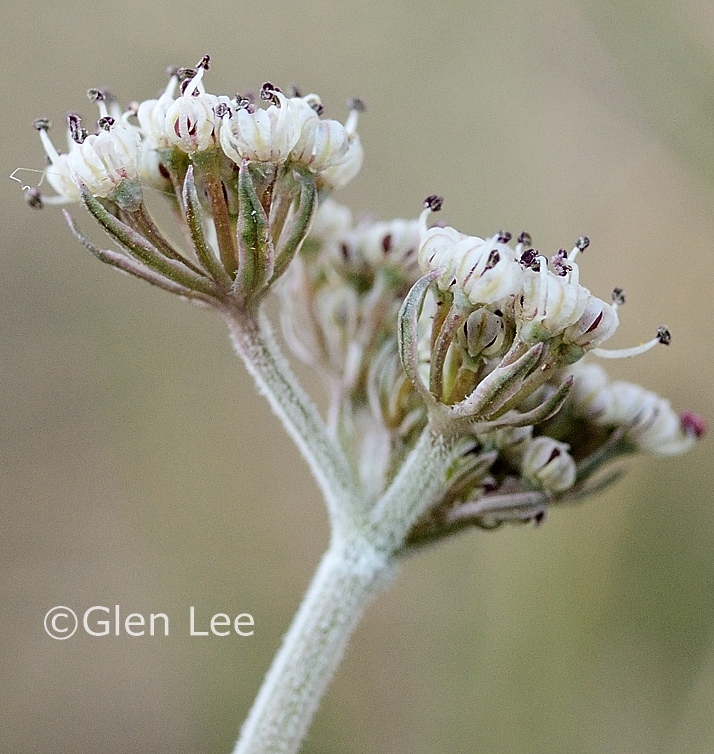
Bractlets scarious-margined, more or less glabrous, shorter than
the flowers.
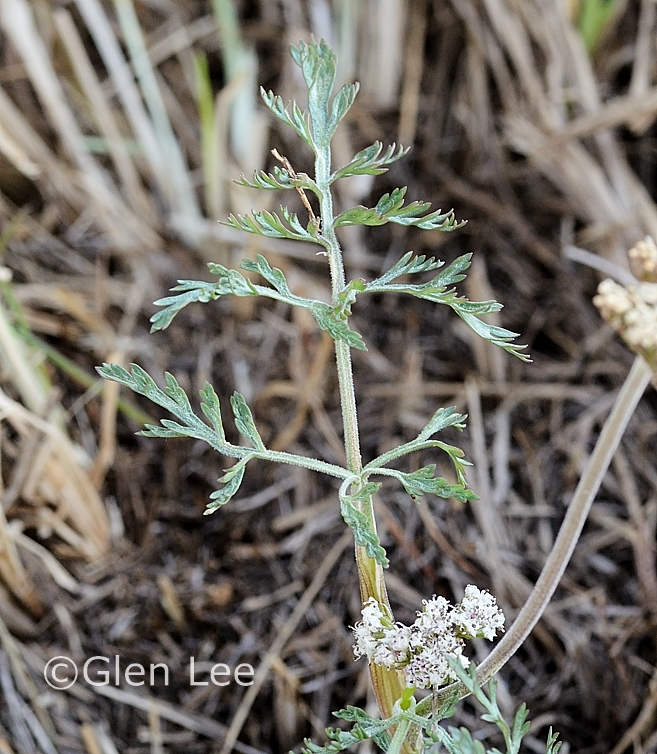
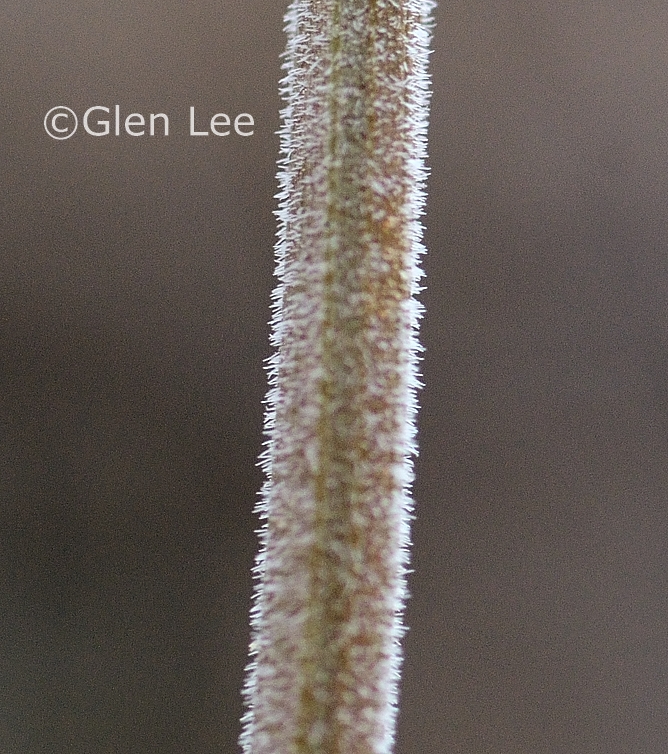
Stems and petioles are puberulent.
Origin: Native.
General: Weak-stemmed plants with bluish-green
foliage. Stems and petioles puberulent. The plants are described in
field guides as acaulescent - plants without a stem or the stem so short
that the leaves are apparently all basal. However to my eye, the plants
appear caulescent (not acaulescent) having an obvious leafy stem rising
from the ground.
The plants were very difficult to see growing amongst the tall grasses
in their prairie pasture. It was not until I was bent
right over close to the ground, or crawling on hands and knees that I could see them.
Flowers: Flowers are white, the inflorescence is a compound umbel. I measured an entire umbel to 18 mm wide, and a single umbellet to 7 mm wide, a single flower was 1 mm wide. The bractlets shorter or only as long as the inflorescence. The bractlets have scarious (membranous / translucent) margins, are glabrous and narrowly lanceolate. I measured a bractlet at 3 mm long by 0.5 mm wide. Flowers have an unpleasant scent.
Leaves: Leaves all cauline, alternate, 2-3 times pinnately divided. I measured a leaf blade at 5.5 cm long by 4 cm wide.
Height: Height listed in Flora of the Great Plains to 40 cm, however the plants I observed were much smaller, the tallest was only 11 cm tall.
Habitat: Dry prairies in the extreme southeast corner of Saskatchewan.
Abundance: Extremely rare, ranked as an S1 (as of 2021) by the Saskatchewan Conservation Data Centre. The plant's northern and western range in North America ends in the southeast corner of the province.
Similar species: This plant is very similar to Lomatium macrocarpum. To distinguish between the two species:
- The bractlets of L. orientale are
scarious-margined, glabrous, and of equal length or shorter than the
flowers. The bractlets of L. macrocarpum are green, puberulent,
and longer than the flowers.
- The leaves of L. orientale are alternate, while
L. macrocarpum has at least one pair of leaves at the base of
its peduncles.
When and where photographed: Photos taken April 29th and May 4th on dry prairie on bench land near the Souris River valley, about 225 km southeast of our home in Regina, SK. Note the plants were just finishing flowering, it would have been better to have photographed them April 24th or 25th.